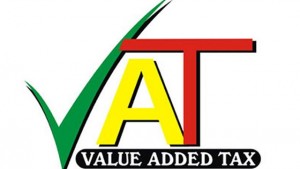 President Trump said Saturday the U.S. will treat value added tax (VAT) systems the same as tariffs, for purposes of helping to calculate the reciprocal levies on other countries he ordered earlier this week.
President Trump said Saturday the U.S. will treat value added tax (VAT) systems the same as tariffs, for purposes of helping to calculate the reciprocal levies on other countries he ordered earlier this week.
Why it matters: At least 175 countries globally have a VAT, per the Organisation for Economic Co-operation and Development (OECD), meaning it could impact the math on any reciprocal tariff for most nations around the world.
The impact could be most immediate in the European Union, which has standardized value added taxes with an average rate of almost 22%.
What they’re saying: “For purposes of this United States Policy, we will consider Countries that use the VAT System, which is far more punitive than a Tariff, to be similar to that of a Tariff,” Trump wrote on Truth Social.
That follows a memo he issued Thursday, ordering trade officials to study assessing reciprocal tariffs on any country that levies the import of U.S. goods at a higher rate than the U.S. charges that country’s goods.
Part of the study’s task is defining a system to calculate the appropriate levies for each country, taking into account factors like the regulatory regime, the business climate, existing tariffs, and whether there’s a VAT in place.
The end result of any proposed system is likely to be tailored on a country-by-country basis, and more complex than a simple “you charge X so we charge X back.”
The study is due by April 1.
The intrigue: When he signed the Thursday memo, Trump told reporters he felt VATs were worse than tariffs.
That immediately sparked fears of a trade war with Europe, particularly given Trump’s recent promises to eventually target the EU with tariffs.
Tax analysts generally argue that the European VAT isn’t much of a burden on U.S. exporters.
What is a VAT?
Between the lines: The idea of a value added tax, or VAT, dates to France in the early 1950s.
Broadly speaking, it is a consumption tax, paid by the consumer.
The OECD describes it as “a tax collected at all stages of the processes of production and distribution of goods and services.”
VAT rates vary around the world, and in many countries different rates are charged for different categories of products.
In some places, like Hungary, they can be as high as 27%.
How does VAT work?
Zoom out: Generally, the buyer of a good or service pays the VAT to a seller, who remits that payment to the tax authorities.
The EU’s primer on VAT explains it as a multi-stage process.
The creator of a good or service collects VAT from whoever they sell their product to. That creator in turn subtracts the VAT they paid to whoever provided them their raw materials.
What’s left is the tax paid to the government.
It differs from the sales tax most Americans are used to paying, in that with VAT everyone in the process pays a piece of the final taxable amount, and the VAT is built into the price of an item.
